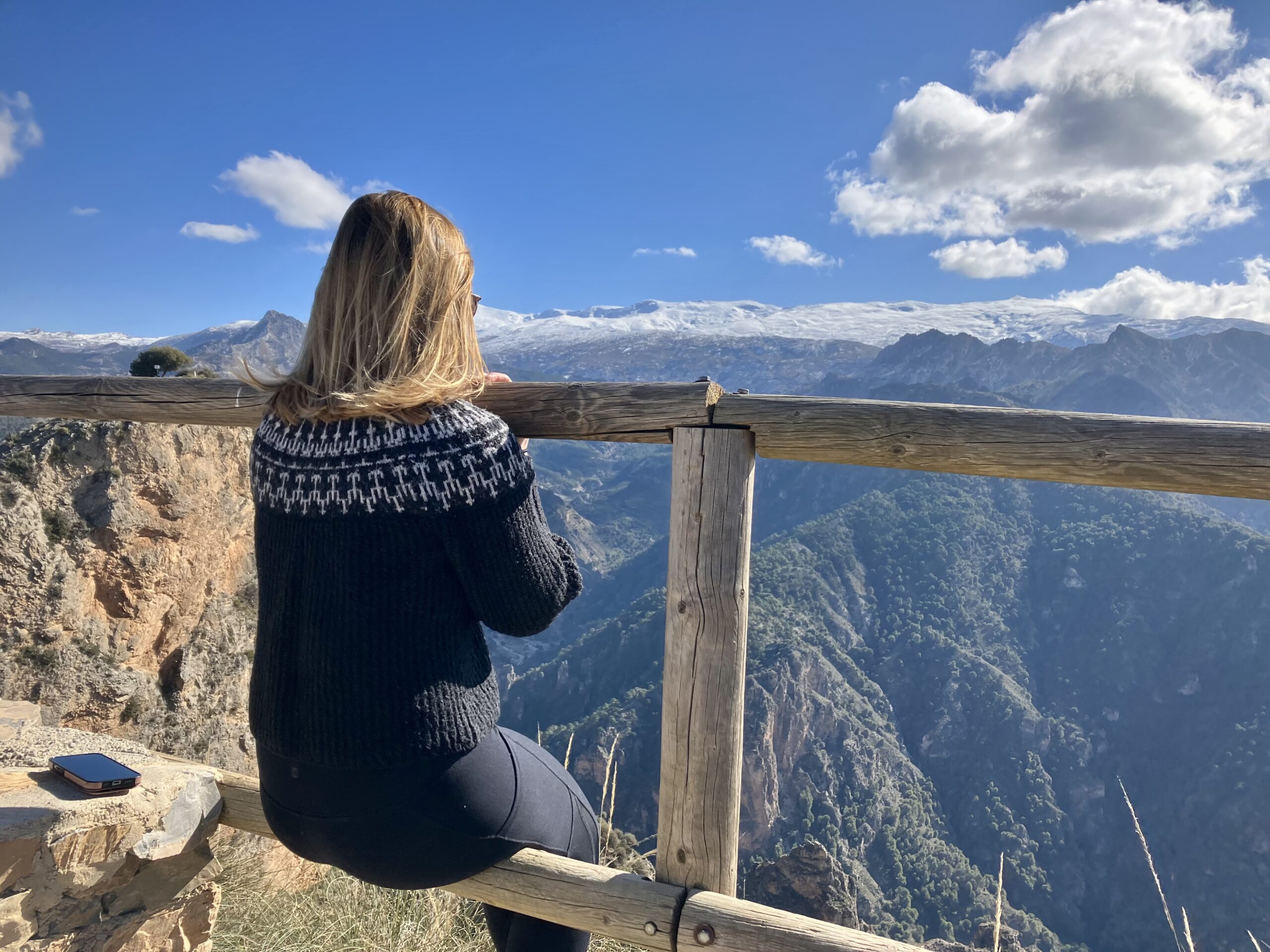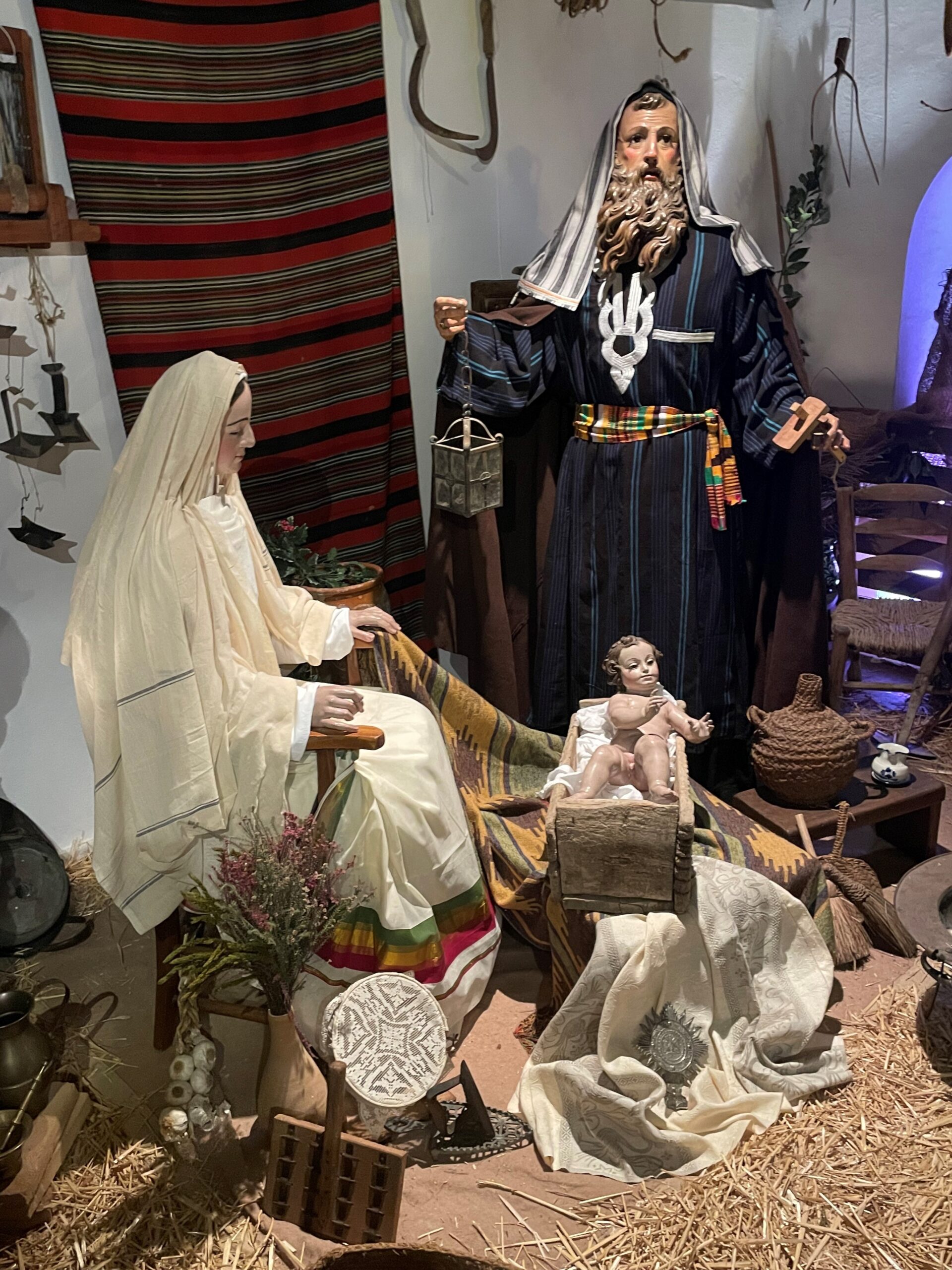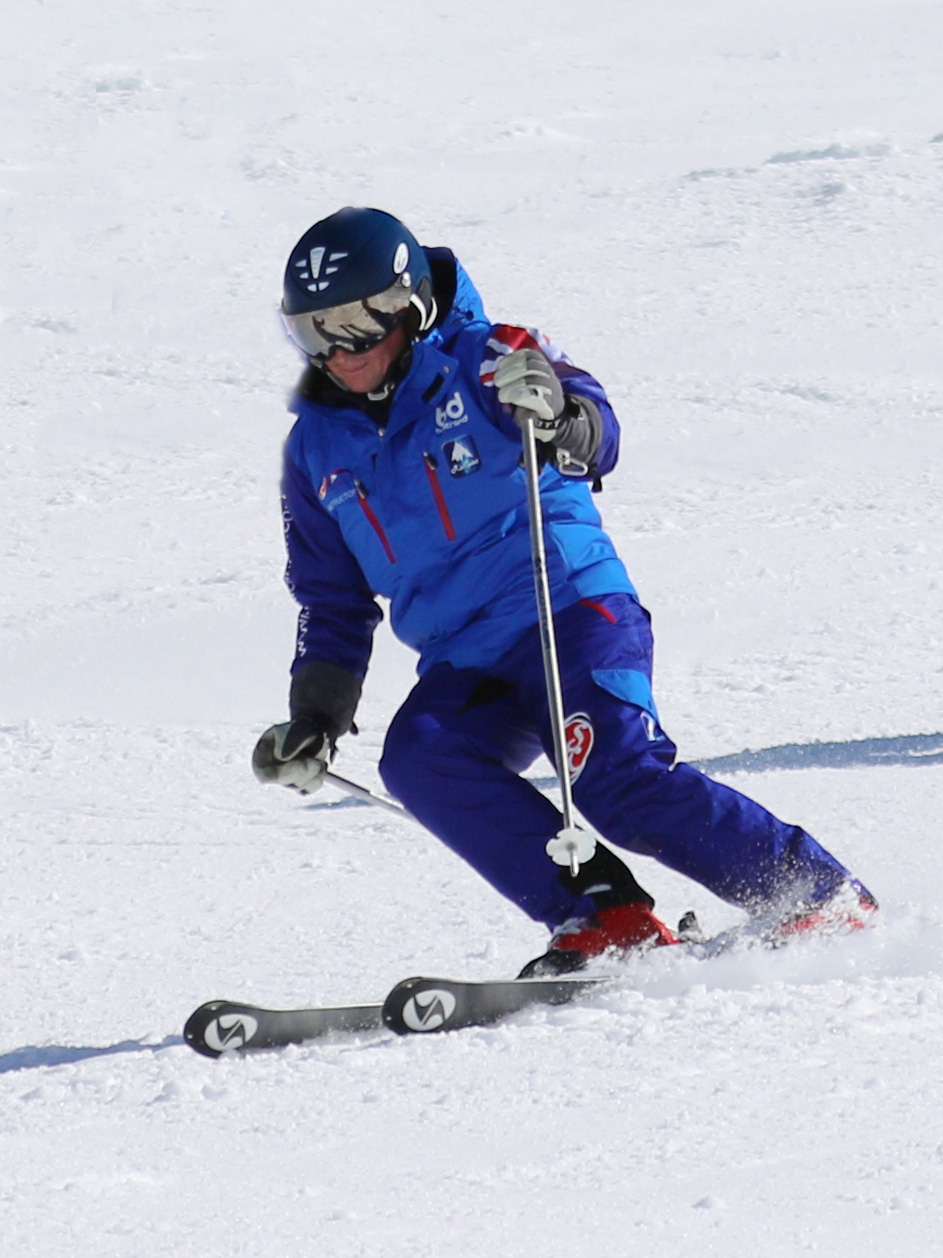Are you initially from Granada, and how did you get into sculpting?
I was born in Guadix. My family and I moved to Granada when I was 15, so I have called this city home for 35 years. There isn’t a specific moment to which I can trace back my fascination with art. It has been with me forever. Even as a young child, I always needed to express myself by making things out of clay. No one in my family has a background in art, but my family has always supported my interests and, as gifts, would present me with plasticine and clay.
What was the trajectory from childhood hobbyist to master sculptor?
I began as a self-taught artist. When I was young, I didn’t look at it as art; it was just a form of personal expression, which I didn’t even realize was called sculpture. Following my passion, I studied at the School of Arts and Crafts in Guadix, then in Granada, and continued to study fine arts in Rome and Sevilla.
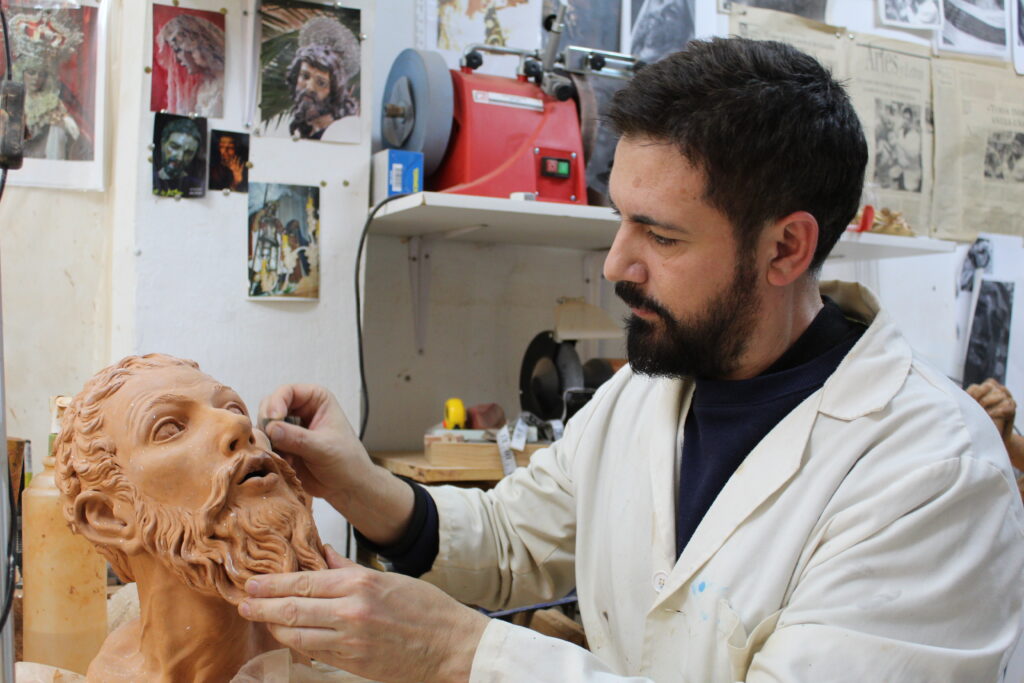
Was there a specific master who influenced your artistic development?
I drew inspiration from many masters, but I don’t consider myself a product of any of them. Instead, I developed my own style by taking what I found useful from each one. I’ve always been fond of “imagery,” the type of sculpture that I dedicate myself to, which was very prominent in Granada, especially during the Baroque period. The artists I consider masters lived more than 300 years ago: Alonso Cano, José de Mora, Torcuato Ruiz del Peral. They were a source of inspiration, and even as a child, I was fascinated by their works when I observed them in museums, churches, and processions.
When did you create your first sculpture?
I made a clay doll inspired by Semana Santa figures when I was five. Unfortunately, I don’t have it anymore because my creations didn’t last long due to clay’s soft nature. I would also dismantle my first creations to make new ones.
Did you always know that you wanted to sculpt religious figures?
I was drawn to how sculptures are displayed in church settings and during processions. Combined with the incense and music, they expand their appeal to include all the senses, adding a lot of context and meaning to the art form. For example, seeing a sculpture in a rotary is not the same as appreciating it in a church, to the sound of an organ playing. That setting gives it an almost divine dimension, which always fascinated me as a child because it seemed to create a space between human and divine.
Your work follows the Granadan School of Sculpture. What exactly does that mean?
The Granada School of Sculpture is a Baroque style of sculpture inspired by the canons of classicism, based on balance and proportions, which distinguishes it from other schools. The Granada school is expressive but not theatrical and characterized by peculiar physical features: a very fine nose, large eyes, a small mouth.
Many of your statues are used in Holy Week processions. Are there any factors that make them different?
In Andalusia, the most common material used in these statues is polychrome wood, which I primarily work with, and clay. But my work reflects what I am commissioned to create, so the specific materials can vary. For Granada’s Holy Week this year, I was commissioned to make some statues out of polychrome bronzes and a statue of Saint Philip the Apostle out of polychrome wood for the city of Motril.
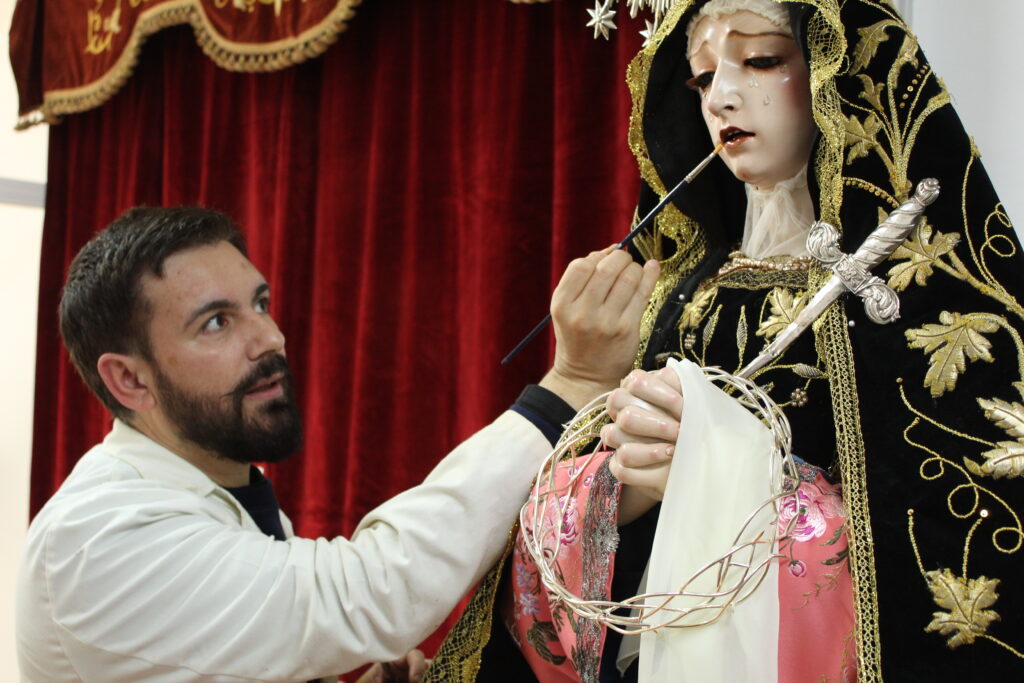
How long does it take to produce a statue like the ones used for Holy Week?
About four months.
So, some of your sculptures will debut during this year’s processions?
Yes, such as the polychrome bronzes in the Vía Crucis Brotherhood procession. Other sculptures will adorn floats departing from the Church of Santo Domingo on Holy Tuesday and from the Campo del Príncipe on Good Friday. The processions will also feature over 30 figures I created in previous years, such as those of La Borriquilla, for the procession that inaugurates Holy Week on Palm Sunday.
You’re also a high school teacher of plastic arts and visual creation. What’s the difference between your studio’s solitude and this direct contact with students?
Sculpting is a beautiful art form but very demanding. It involves many hours alone in the studio, some with a creative and stimulating aspect and others that fall outside the creative process. Teaching, on the other hand, helps me understand what society needs regarding art. It gives me a dose of reality, whereas sculpting in the studio takes me away from the world.
In 2024, is it a challenge for you to continue pursuing the Baroque style in a modern society where younger generations don’t often appreciate this type of art?
Yes, it’s a challenge. Not necessarily because this type of art is religious but because today’s world prioritizes immediacy. My students always ask me if there are faster machines they can use to replace manual work, but that’s precisely the point: getting used to being patient, to things taking time to complete. That’s what makes this work unique.
What do you feel when you sculpt?
That depends on my mood and what the sculpture suggests. That feeling is not the same when the statue depicts someone good as when it depicts someone bad. For example, right now I’m sculpting a Judas, who embodies an evil person, and his feelings have to be reproduced in his physical features, especially in the face, so that whoever sees it perceives it as evil, and even those who are not believers can empathize with this mood.
Are there any works that have a particular meaning to you?
There is one in particular which took me 14 years to create for the Choir of the Cathedral of Guadix. It’s a collection of 40 sculptures to replace old ones lost in the war. During this process, I met many people who remembered the ancient sculptures, which made this commissioned project even more special to me.
What has been the most meaningful aspect of your career?
That people could understand my inner world through my sculpture. They often tell me I’m very patient, but I never think of myself that way; instead, I consider myself quite nervous. Art has changed my perspective on myself by showing me new traits of my personality.
If you could be a sculptor from the past, who would you be?
José de Mora, whom I admire for representing that Granada identity. He interpreted Granada’s introverted personality through his sculptures’ features, that inward pain seen in the Holy Week figures.
What would you be doing if you had not become a sculptor?
I think I would have been a pastry chef! I really like baking.
So, what is your favorite pastry?
Tocino de cielo (candied egg yolk from heaven), which coincidentally is also related to the divine… but that may not be a coincidence at all!

